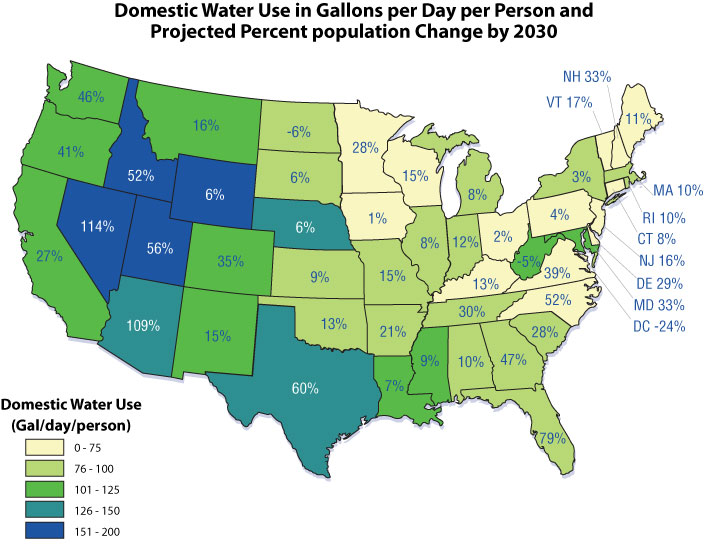Tomorrow & Beyond
The Water World
Water is vital to the survival of everything on the planet. The Earth might seem like it has abundant water, but in fact less than 1 percent is available for human use. The rest is either salt water found in oceans, fresh water frozen in the polar ice caps, or too inaccessible for practical usage. While population and demand on freshwater resources are increasing, supply will always remain constant. And although it's true that the water cycle continuously returns water to Earth, it is not always returned to the same place, or in the same quantity and quality.
Communities Face Challenges
Managing water is a growing concern in the United States. Communities across the country are starting to face challenges regarding water supply and a need to update aging water treatment and delivery systems, sometimes referred to as "water infrastructure". Many of the states that have projected population growth increases also have higher per capita water use and can expect increased competition for water resources.

Water data from USGS, Estimated Use of Water in the United States in 2005. Table 6, Page 20; population data from U.S. Census Bureau, State Interim Population Projections by Age and Sex: 2004-2030.
Strains on water supplies and our aging water treatment systems can lead to a variety of consequences for communities:
- Higher water prices to ensure continued access to a reliable and safe supply
- Increased summer watering restrictions to manage shortages
- Seasonal loss of recreational areas like lakes and rivers when the human demand for water conflicts with environmental needs
- Expensive water treatment projects to transport and store freshwater when local demand overcomes available capacity
Droughts happen somewhere in the country every year and climate change has the potential to increase stress on water resources. In order to create a more sustainable water future, cities and states are coming together to encourage water conservation as a way to reduce demand.




